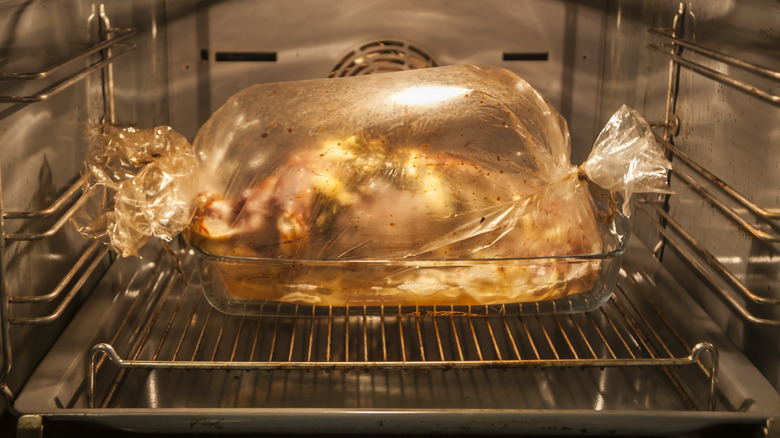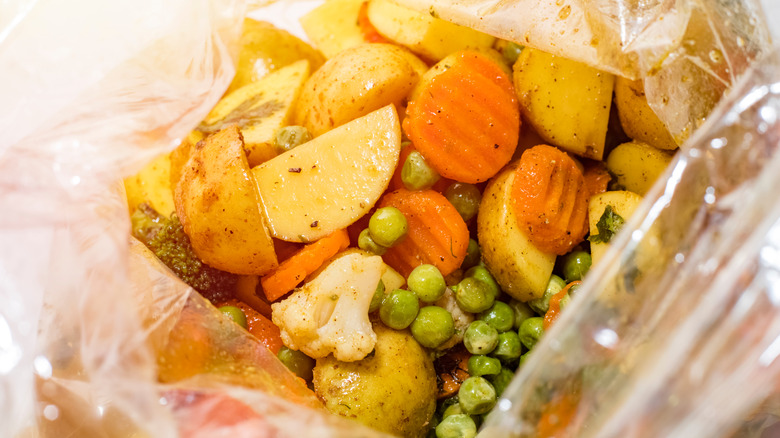The Science Behind Cooking With An Oven Bag
If you've ever blown up a balloon, you know it's only a matter of time and pressure before it pops. The same thinking can be applied to an oven bag in use: Apart from the mystery of how a plastic bubble can withstand high roasting temperatures, you may wonder how all that hot air blowing in your oven doesn't cause it to burst. The answers lie in the oven-bag manufacturer's guidelines — but here is the science behind them.
The first instruction is often to coat the inside of your oven bag (sometimes known as a roasting bag) with flour. This is because flour is hygroscopic, meaning it absorbs moisture, so it'll capture juices that seep from food as it cooks. Consequently, this reduces the pressure in the oven bag so it doesn't swell up. Once you've placed the food inside, you seal the oven bag and cut slits on top so that some steam can escape, effectively guaranteeing that your oven bag won't burst.
Next, place your oven bag in a roasting pan and preheat the oven. Perhaps you're cooking spiral cut ham in a roasting bag at temperatures of at least 250 degrees Fahrenheit. The good thing is a roasting bag is made with heat-resistant nylon or polyester, so it can withstand oven temperatures of up to 400 degrees Fahrenheit. As it heats up, the bag traps moisture and condenses it into droplets that fall onto the meat so that it self-bastes into the juiciest and most tender result.
The benefits of using an oven bag to cook
Using an oven bag is the route to go for a flavorful and succulent roast. Its ability to retain moisture comes via a self-basting cycle that captures all the natural food juices resulting in maximum flavor. Seasonings in the oven bag are also constantly in contact with the food while cooking so they infuse it with optimal flavor.
Along with juicy and flavorful results, the smaller enclosed environment of an oven bag ensures that heat evenly distributes, while the slits prevent it from overly steaming. The result is tender and evenly cooked food done in a relatively short space of time. That said, ask most cooks, and they'll tell you that the best part about using an oven bag is the minimal clean-up afterward. There's no splatter or mess — everything is contained in the bag, which is usually discarded at the end (although some polyester bags can be reused). But you will completely avoid the danger of letting food drip in the oven.
To make full use of oven bags, whip one out to roast meat, poultry, or vegetables. Whether you want a change of pace from the conventional cooking approach for roast turkey or just need to roast a whole chicken for dinner, the oven bag will see you through. Our recommendation, however, is to cook corned beef with potatoes or cabbage in an oven bag for a traditional one-pot (or one-bag) meal that's ultimately simpler and deliciously flavorful.

